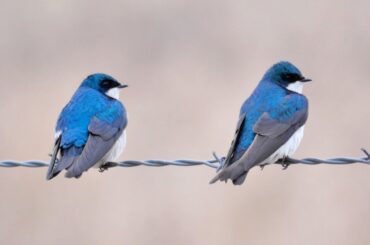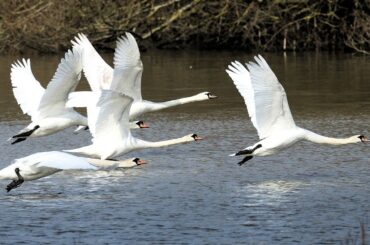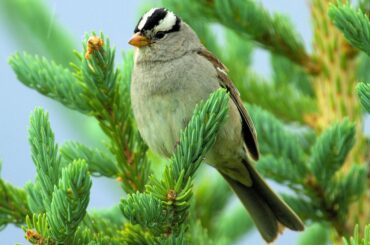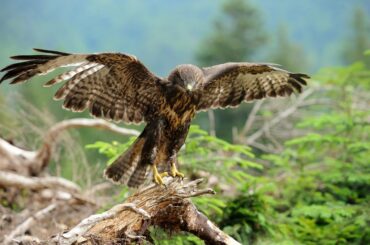Have you ever thought about what makes birds with red chests so beautiful? Which red-chested bird is known for its beautiful song attracting birdwatchers and possible mates? The avian world is adorned with a kaleidoscope of crimson hues, from the vibrant Northern Cardinal to the elegant Scarlet Tanager.
Many small birds’ red feathers come from pigments called “carotenoids” from their food. This means that the color of their feathers shows what they eat. This bright bird with a red belly uses its color to attract mates and defend its territory, showing how strong and healthy it is.
Prepare to be amazed by the mesmerizing beauty of these 30 red-chested birds as we uncover the allure of their crimson chests and gain a deeper appreciation for the wonders of nature’s vibrant palette.
What do Red-Chested Birds Look Like?
Red-chested birds are truly remarkable and colorful creatures. During the breeding season, these beautiful birds showcase their bright red plumage, especially on their chests.
One example is the painted bunting, a small bird with a red chest known for its stunning appearance. These birds also exhibit various shades of red on their wings and tails, creating a vibrant display during flight.
The little black head and bright red chest of the Cassin’s finch make it an interesting species in its own right. Black, red, and other colors are found on the bodies of these birds, making them a sight to behold. Some are tiny, like the painted bunting, while others are larger.
Are Red-Chested Birds Good to Have Around?
The way these birds look for food is important to ecosystems because it helps pollinate plants and spread seeds. They also help control the number of insects, which can help keep the environment balanced and reduce pests.
Their bright red feathers add a pop of color to fields, gardens, and parks, making them more interesting and improving the atmosphere. The presence of these birds can bring delight and a sense of wonder, making them a welcomed addition to any environment.
Northern Cardinal
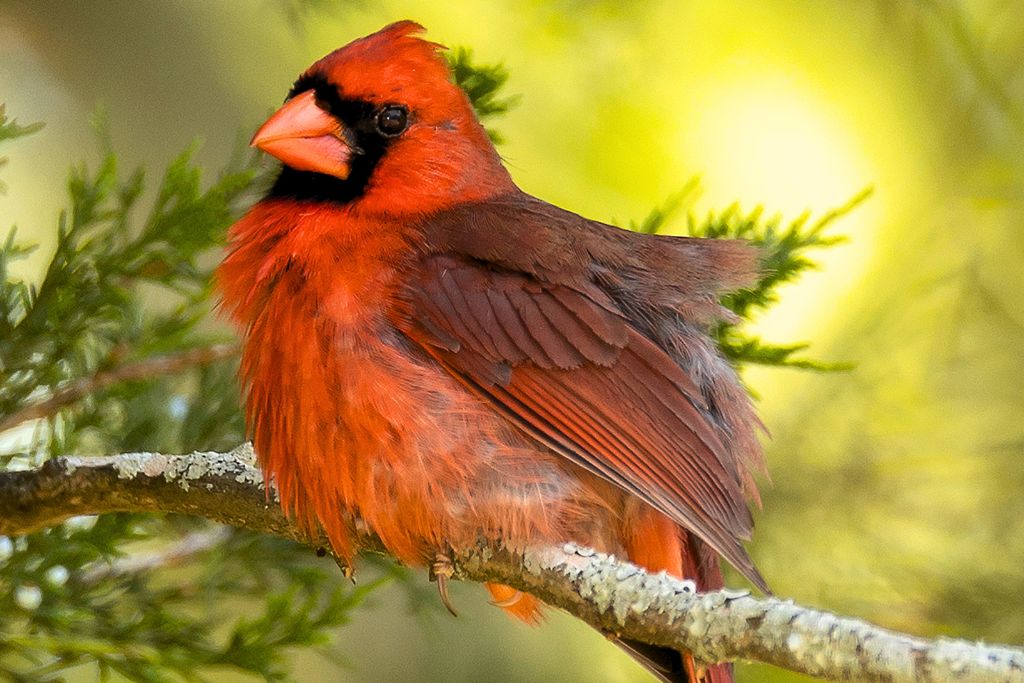
- Kingdom: Animalia
- Phylum: Chordata
- Class: Aves
- Order: Passeriformes
- Genus: Cardinalis
- Species: C. cardinalis
The Northern Cardinal (Cardinalis cardinalis) is a striking bird with a red chest, known for its vibrant color and distinctive crest on its head. The male has bright red plumage, while the female displays a combination of red and brown feathers. They are considered medium-sized birds due to their length of 8 to 9 inches.
Cardinals’ beautiful songs have dual purposes: they help the birds communicate and help them protect their territory.
Unlike some other red-chested birds, both male and female cardinals are involved in building the nest. The female constructs the nest using twigs, leaves, and grass, while the male brings her food. They prefer to nest in dense shrubs or trees, protecting their eggs and young chicks.
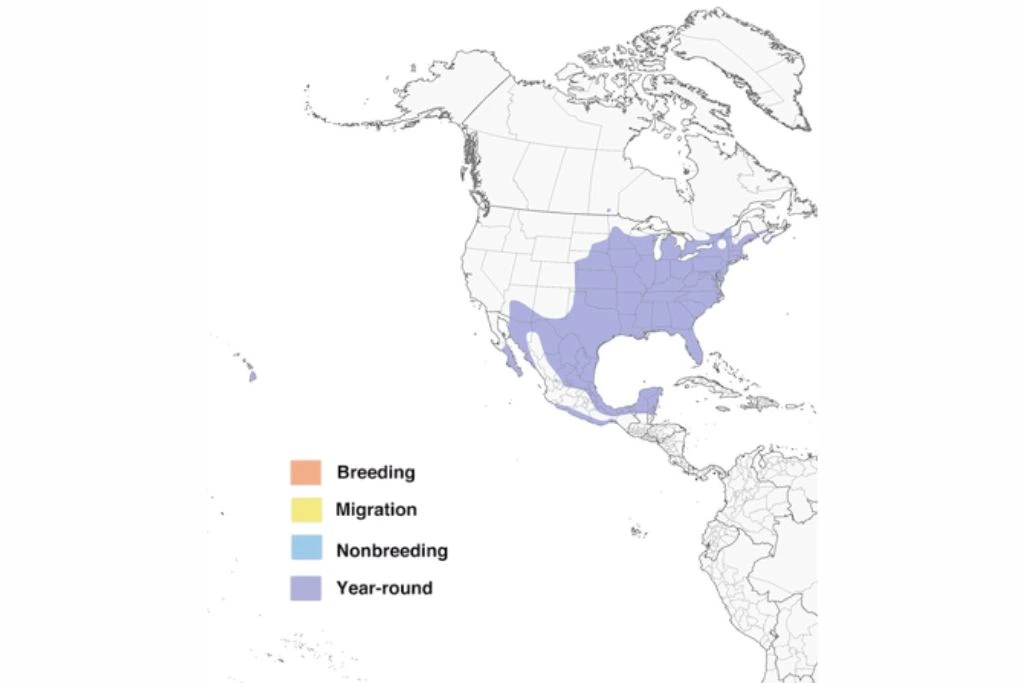
The life expectancy of Northern Cardinals is around 3 years, although some can live up to 15 years. These birds are widespread across North America, from Canada to Mexico. They inhabit various habitats, including forests, gardens, and parks. Northern cardinals are commonly seen near bird feeders, feeding on seeds, fruits, and insects.
Scarlet Tanager
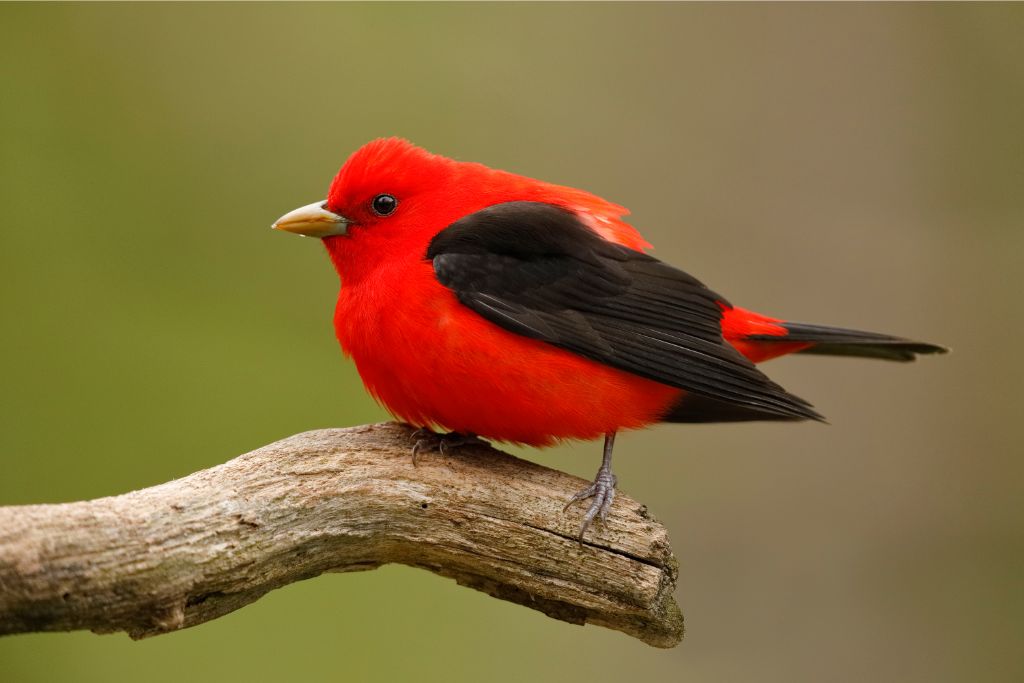
- Kingdom: Animalia
- Phylum: Chordata
- Class: Aves
- Order: Passeriformes
- Genus: Piranga
- Species: P. olivacea
The Scarlet Tanager (Piranga olivacea) is a brightly colored bird with a crimson chest that gives it its name. The males are a bright red color that stands out, while the females are a softer yellowish green. Most of these birds are about 7 to 7.5 inches long.
Scarlet Tanagers use their catchy songs to find mates and mark their area during mating season. They only have one partner, unlike other birds with red bellies.
They make nests in the shape of cups out of sticks, grass, and leaves. People hang these nests from trees on their sides.

The average lifespan of a Scarlet Tanager is about 2 to 3 years. Most of the time, they live in deciduous woods in Eastern North America. They can be seen in Central and South America when they are on the move. Scarlet tanagers look for food in the trees.
Summer Tanager
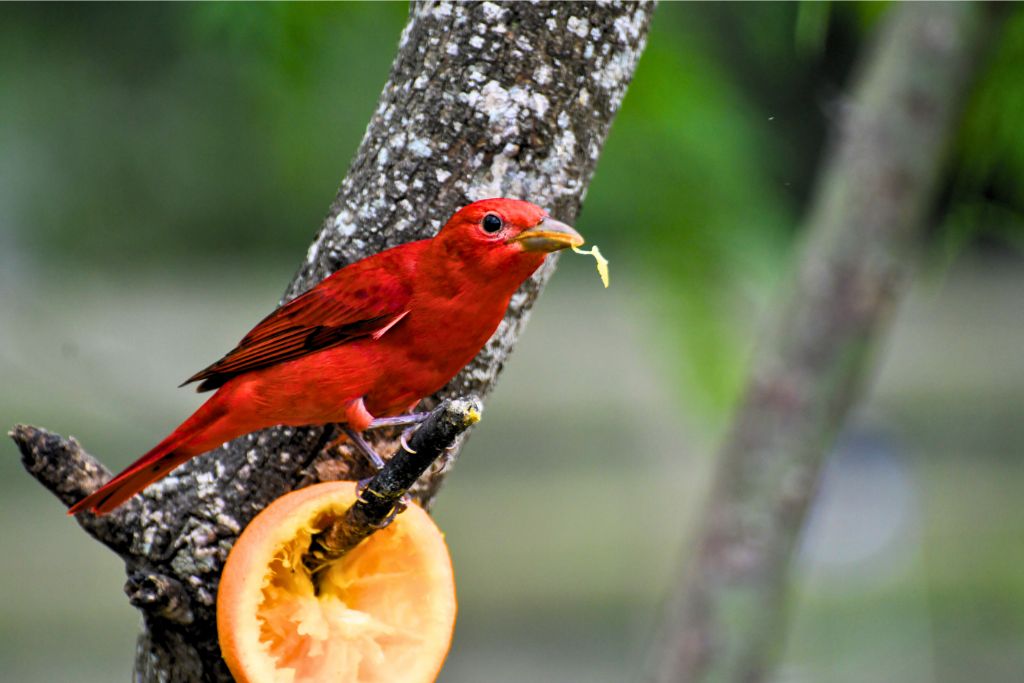
- Kingdom: Animalia
- Phylum: Chordata
- Class: Aves
- Order: Passeriformes
- Genus: Piranga
- Species: P. rubra
The Summer Tanager (Piranga rubra) is a red-chested bird with bright red feathers. Males are all red, and females have a yellowish-green color. Their average length is between 7.5 and 8.5 inches, making them a medium-sized species of songbird. The summer tanager has a beautiful song that combines a number of different tones.
Unlike other red-chested birds, they catch insects by catching flies. They often sit in bushes and dart out to catch insects in mid-air. Summer tanagers are known for their aerial tricks while eating.
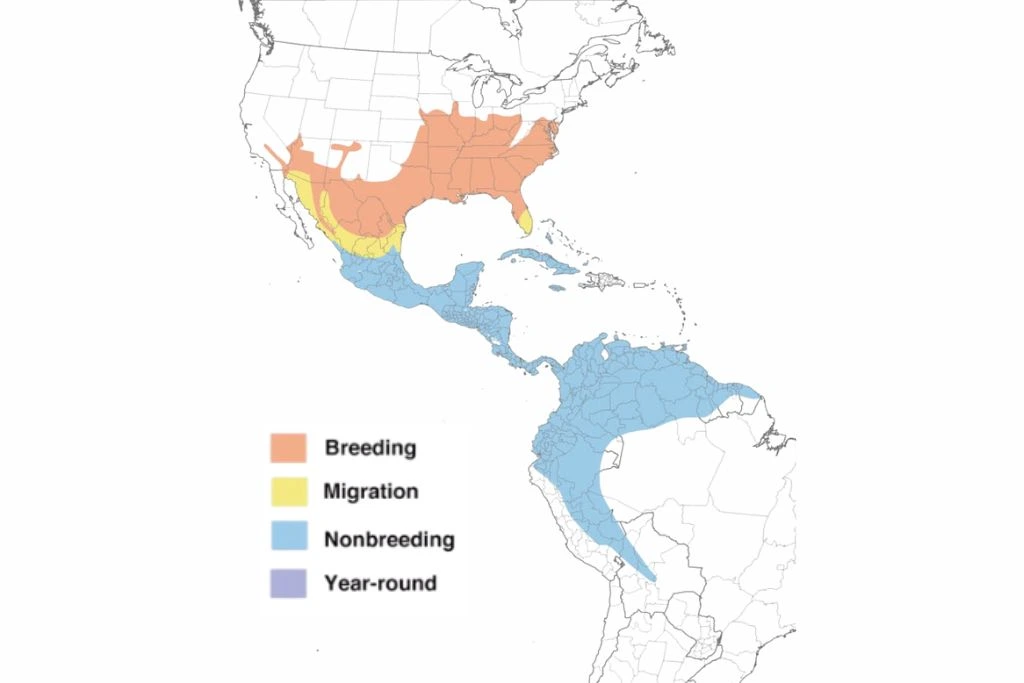
The average lifespan of a Summer tanager is between 3 and 6 years. They migrate largely to the Southeast and Southwest US. These birds favor forests, edges, and open woods. Summer tanagers eat bees, wasps, beetles, and butterflies.
American Robin
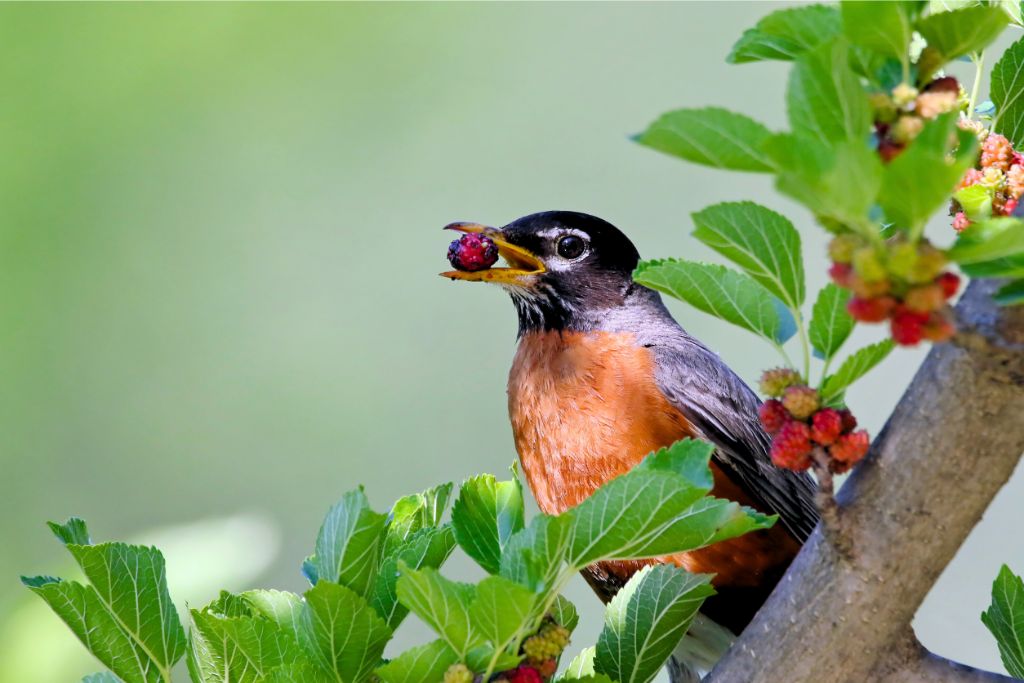
- Kingdom: Animalia
- Phylum: Chordata
- Class: Aves
- Order: Passeriformes
- Genus: Turdus
- Species: T. migratorius
The American robin (Turdus migratorius) is a trendy bird that lives all over North America. It is about 10 inches long and has a breast that is bright orange. They are known for their melodic song, which they use to communicate and protect their area.
Compared to other red-chested birds, American robins make their nests out of sticks, grass, and mud in the shape of a cup. They usually build their nests on tree limbs or ledges. Robins start breeding in the spring because they are early breeders. Both parents take turns caring for their blue eggs.
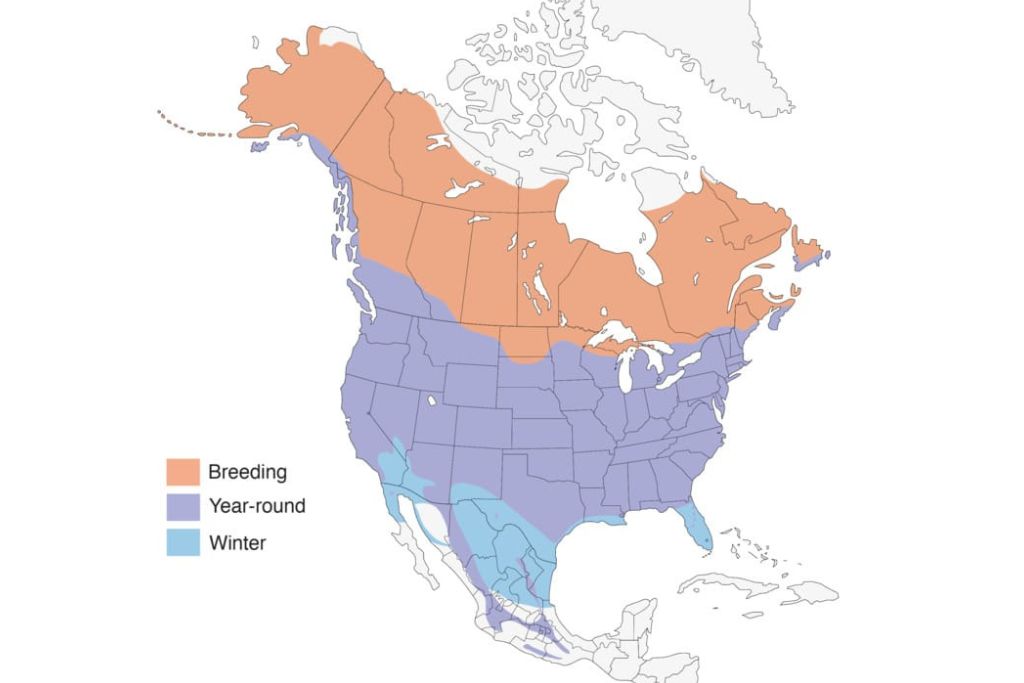
The average lifespan of an American robin is between 2 and 6 years. They are flexible birds that can live in a variety of places, such as woods, parks, and cities.
Robins eat mostly earthworms, insects, berries, and fruits. You can often see them hopping around on the grass or searching for food on the ground.
House Finch
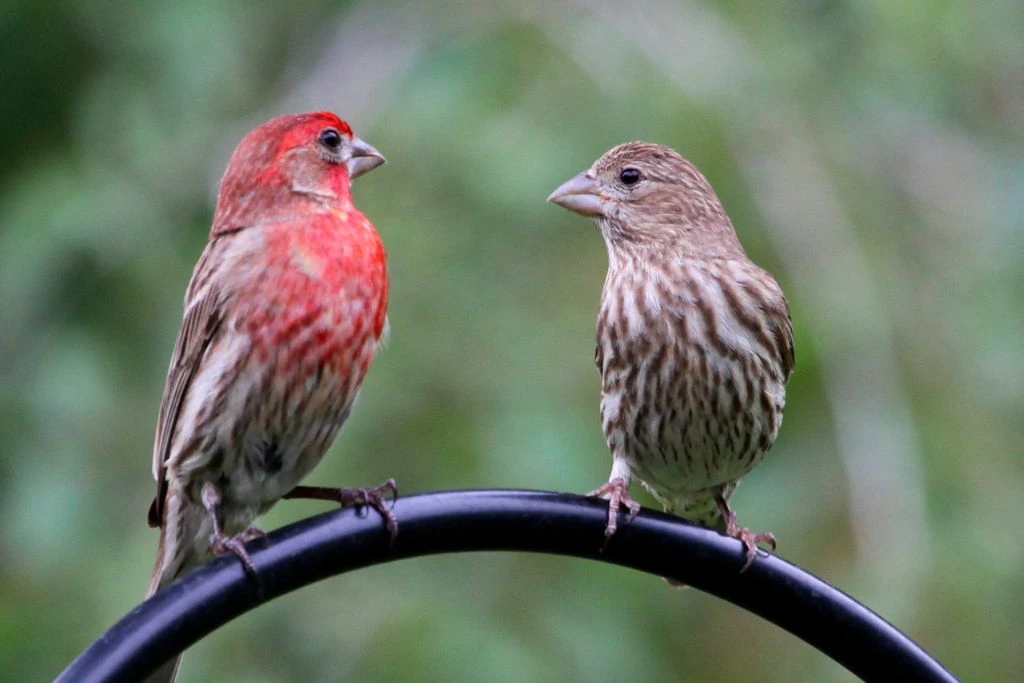
- Kingdom: Animalia
- Phylum: Chordata
- Class: Aves
- Order: Passeriformes
- Genus: Haemorhous
- Species: H. mexicanus
House finch (Haemorhous mexicanus) is a small bird with a belly that is either red or pinkish-red on both males and females. They’re about 5 to 6 inches long and have a pointed beak and a small body.
Feathers of male house finches are darker and more brightly red than those of females, which are browner or have lighter shades of red. Their song is lovely, and their chirping sounds have made them famous.
House finches’ nests are cup-shaped and made of sticks, grass, and other plant fibers. They can nest in a wide range of places, like trees, bushes, and even structures made by people, like birdhouses.
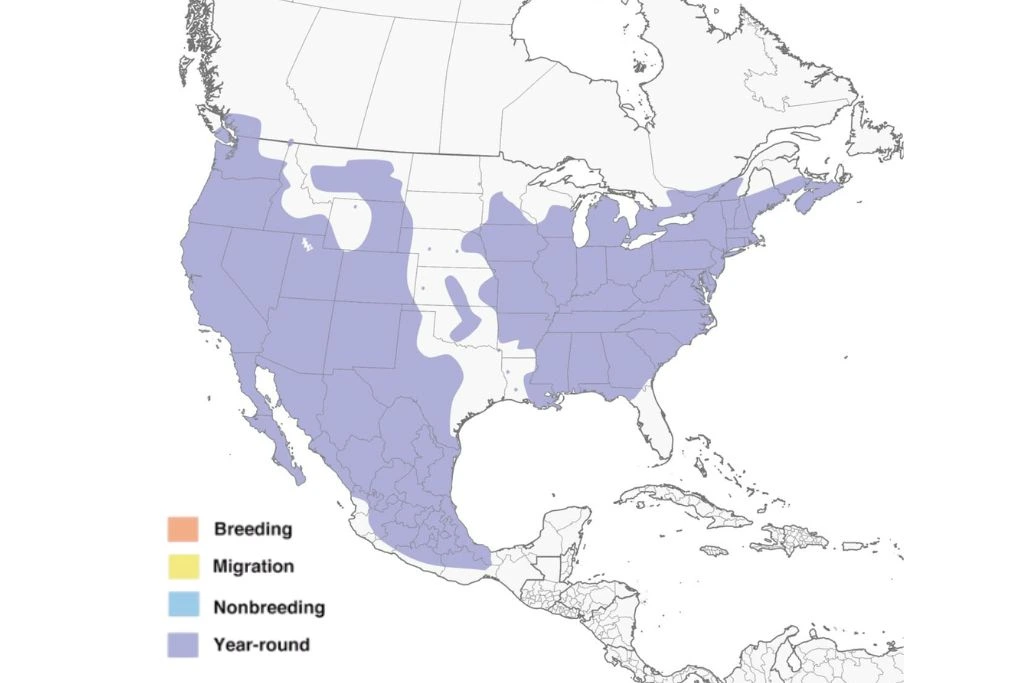
As part of the mating rite, the males will sing to the female and do other things to woo her, like bringing food to her.
House finches live 2 to 5 years. These birds are called “seed eaters” because they consume mostly seeds, but they also eat berries, fruits, and bugs.
Red-Winged Blackbird
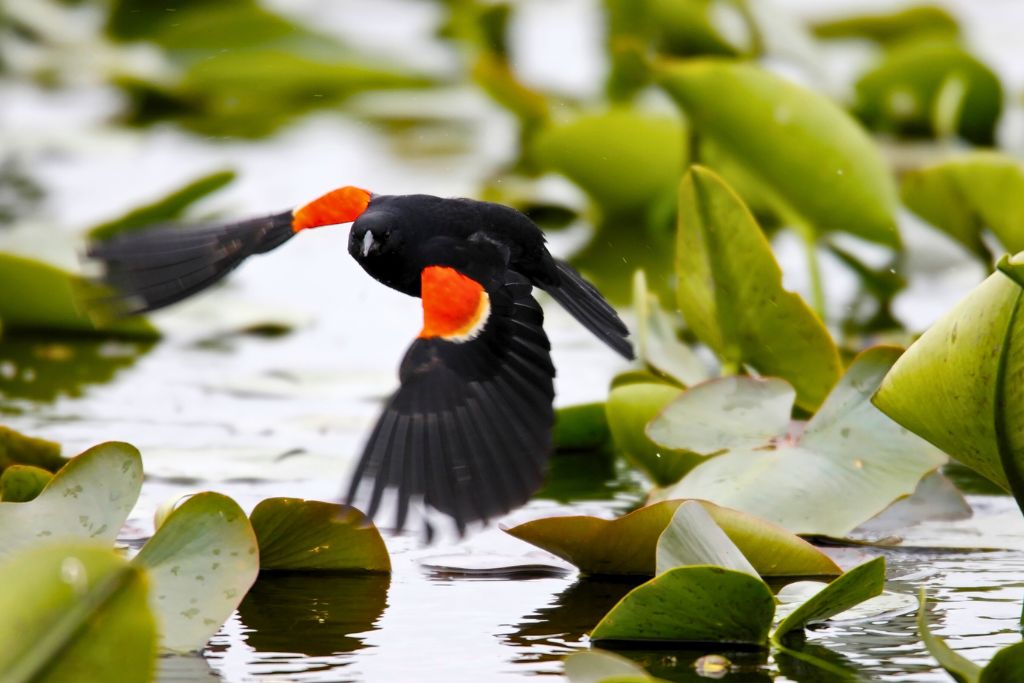
- Kingdom: Animalia
- Phylum: Chordata
- Class: Aves
- Order: Passeriformes
- Genus: Agelaius
- Species: A. phoeniceus
The red-winged blackbird (Agelaius phoeniceus) is a distinctive bird with a red chest that can be found across North America. It is a medium-sized bird, with males displaying glossy black plumage and bright red shoulder patches, while females have a more brownish appearance.
These blackbirds are known for their melodious songs and can often be seen perched on cattails or in wetland areas.
They build their nests by weaving grasses and cattails together, attaching them to reeds or other vegetation above water. Males are highly territorial and sing loudly to attract females and establish their breeding territories.
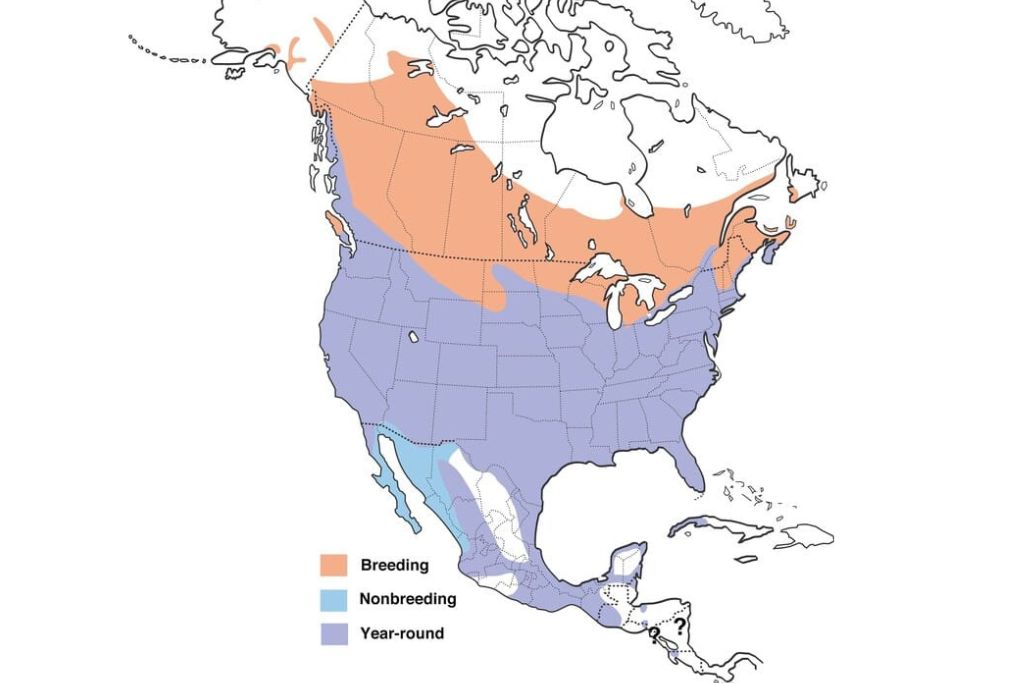
Red-winged blackbirds live between 4 and 15 years. During migration, red-winged blackbirds form vast flocks. Insects, seeds, cereals, and tiny vertebrates are among their diets.
Purple Finch
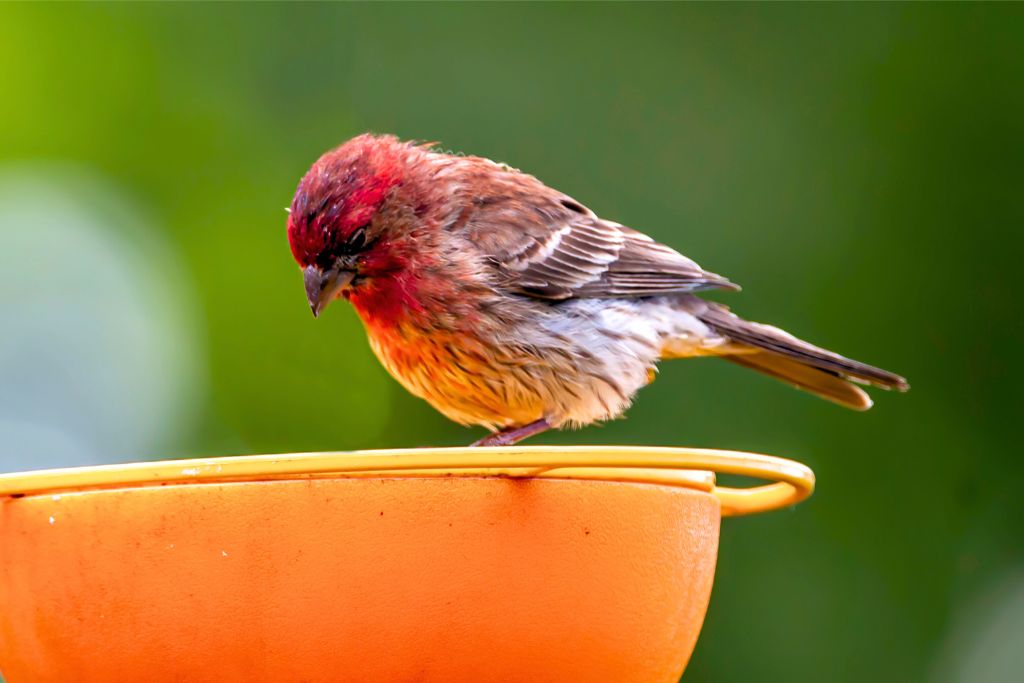
- Kingdom: Animalia
- Phylum: Chordata
- Class: Aves
- Order: Passeriformes
- Genus: Haemorhous
- Species: H. purpureu
The Purple finch (Haemorhous purpureus) is a small bird found in North America, boasting a red chest. Male purple finches exhibit a rosy-red or purple-red color on their chest, while females have a more brownish appearance. These birds have compact bodies, short and pointed beaks, and are renowned for their melodious songs.
Purple finches differ from other red-chested birds in terms of nesting and breeding behaviors. They construct cup-shaped nests using sticks, grass, and bits of roots, typically positioning them on tree branches.
During the breeding season, male purple inches serenade females with their beautiful songs, establishing their territories.
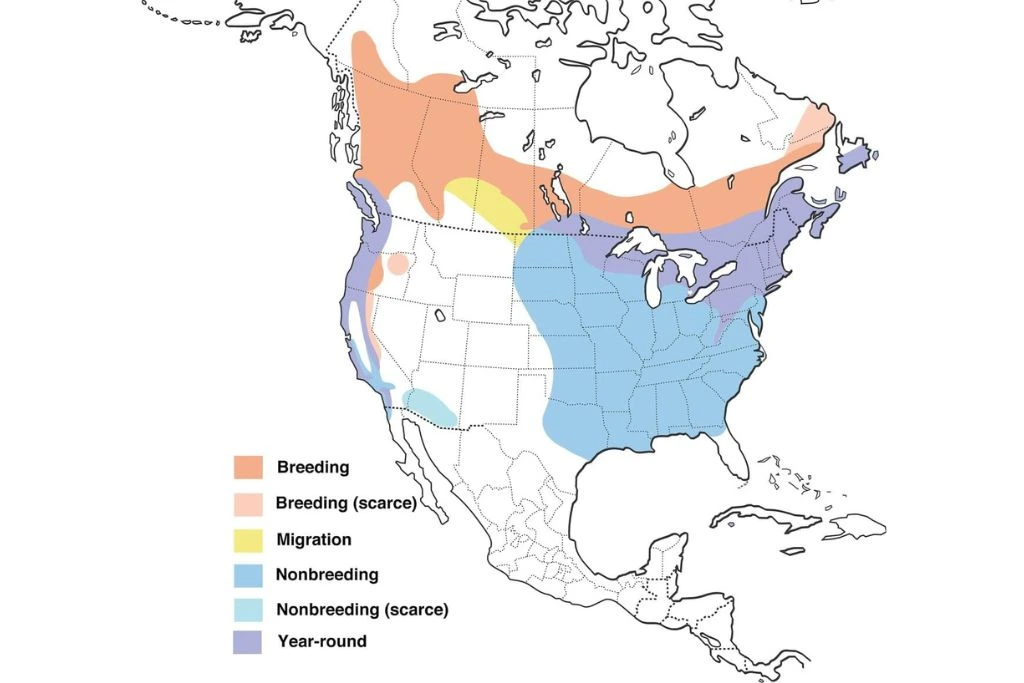
The life expectancy of purple finches is estimated to be around 3 to 5 years. They can be spotted in diverse habitats, like forests, woodlands, and gardens.
These finches often gather in small flocks to search for seeds, nuts, and fruits. Additionally, they supplement their diet with insects, especially when nurturing their offspring during the breeding season.
Red-Headed Woodpecker
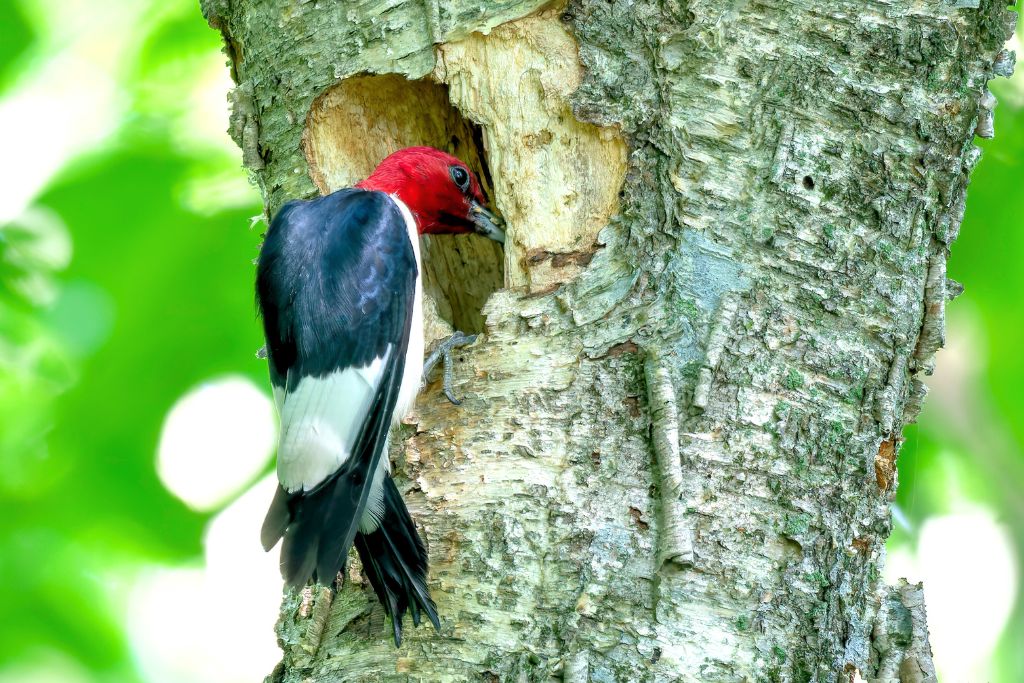
- Kingdom: Animalia
- Phylum: Chordata
- Class: Aves
- Order: Piciformes
- Genus: Melanerpes
- Species: M. erythrocephalus
The Red-headed woodpecker (Melanerpes erythrocephalus) is an eye-catching bird with a vibrant redhead, contrasting with its black and white body. It has a medium-sized build, measuring about 7 to 9 inches long. This woodpecker species stands out not only for its striking appearance but also for its unique behaviors.
They excavate their nests in dead trees or sometimes use existing tree cavities. Unlike many woodpeckers, they don’t rely on drumming sounds to communicate but instead produce a variety of calls.
Estimated life expectancy of Red-headed woodpeckers is around 9 to 12 years. These birds can be found in various habitats, including woodlands, forests, and open areas with scattered trees. They are often observed flying between trees or perching on tree trunks, where they search for their preferred food sources.
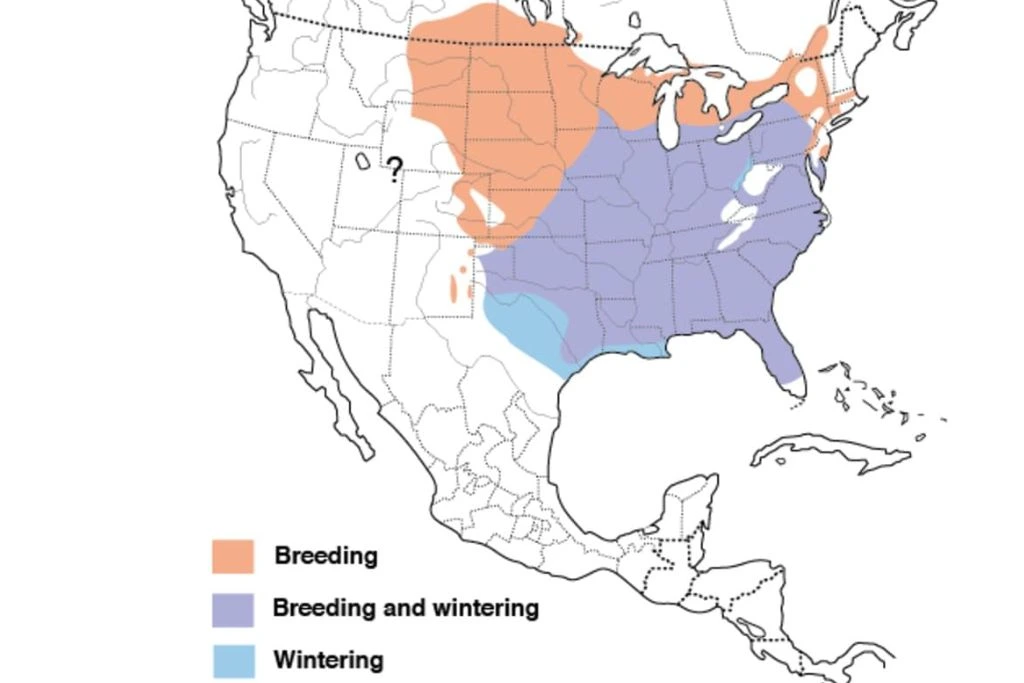
Red-headed woodpeckers eat insects, fruit, nuts, lizards, and frogs. They are good at finding food. They use their strong bills to pull insects out of the bark of trees and catch moving insects in the air. Birdwatchers and people who like nature are interested in how they eat and how striking they look.
Vermilion Flycatcher

- Kingdom: Animalia
- Phylum: Chordata
- Class: Aves
- Order: Passeriformes
- Genus: Pyrocephalus
- Species: P. rubinus
The Vermilion Flycatcher (Pyrocephalus rubinus) is a striking bird with vibrant colors. It has a bright red chest and head, contrasting with its grayish-brown back and wings. This small bird is about 5 to 6 inches long and can be found in the Americas.
They build cup-shaped grass and plant fibers nests, often placed in shrubs or low branches. These birds are territorial and defend their nesting territories by singing and performing aerial displays.
The estimated life expectancy of vermilion flycatchers is around 5 to 7 years. They can be seen in open woodlands, savannas, and brushy areas.
These birds primarily feed on insects, such as flies, mosquitoes, and beetles. They catch their prey by flying out from a perch, capturing insects in mid-air, and returning to the perch to consume them.
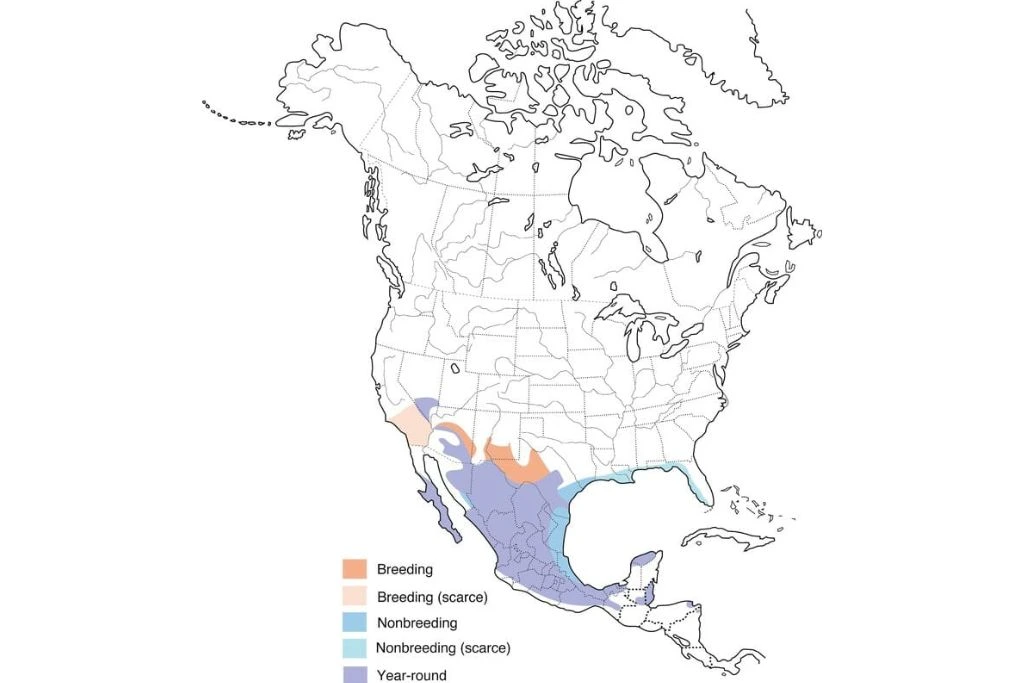
Vermilion Flycatchers are commonly spotted perched on exposed branches or wires, from where they actively search for insects. Their bright colors make them stand out and delight to observe.
Red-Bellied Woodpecker
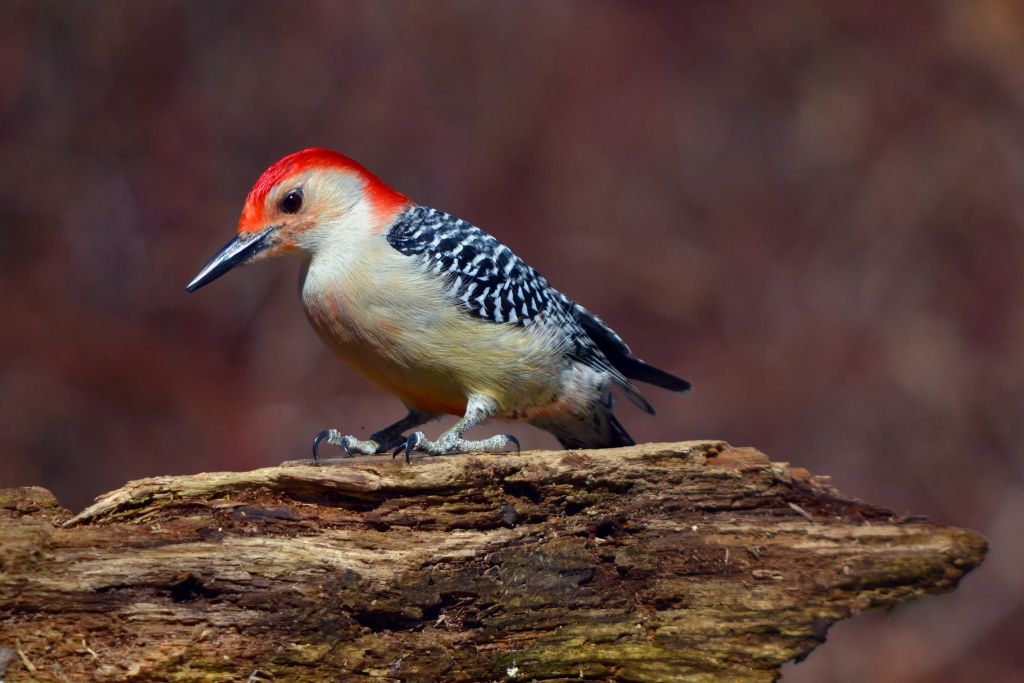
- Kingdom: Animalia
- Phylum: Chordata
- Class: Aves
- Order: Piciformes
- Genus: Melanerpes
- Species: M. carolinus
Even though its name says it has a red chest, the red isn’t as obvious as you might think. This woodpecker has a black and white barred design on its back and wings. Its length is about 9 to 10 inches.
The red-bellied woodpecker (Melanerpes carolinus) is a bird with clear markings, about the size of a crow. Its head and back are red, and its belly has a reddish blush.
A typical lifespan for a woodpecker is estimated to be between 9 and 12 years. They can be found in various environments, from forests and woodlands to suburban neighborhoods with mature trees.
These woodpeckers get most of their nutrition from insects, fruits, nuts, and seeds. Their powerful beaks allow them to peck through tree bark in search of insects and to create nesting cavities.
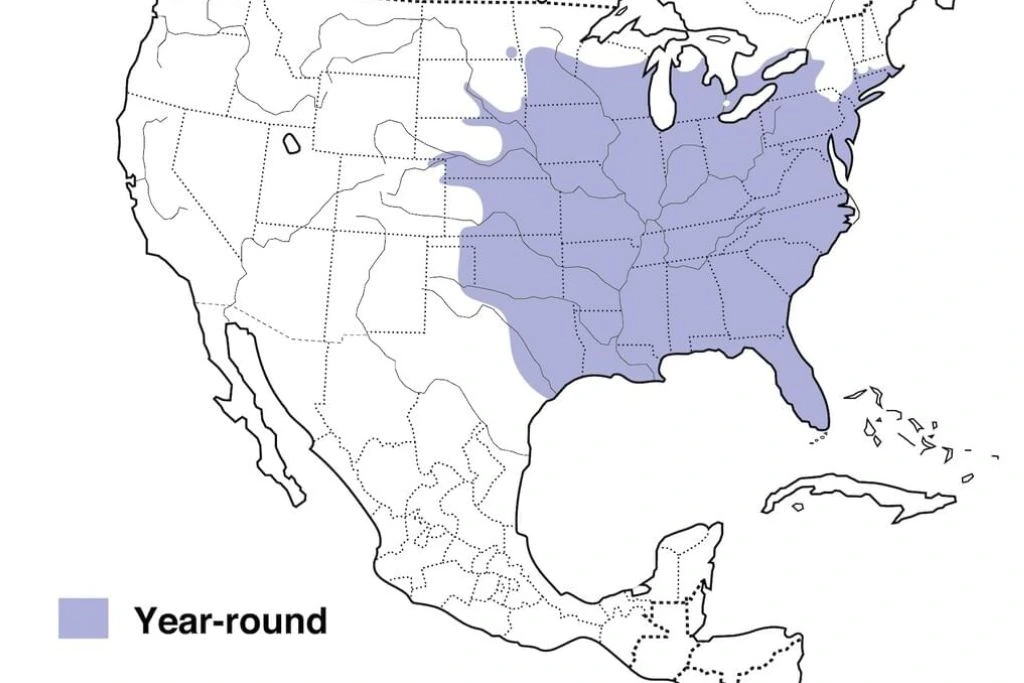
Red-bellied woodpeckers often hang on to tree trunks as they look for food. They can do this because their tail feathers are different and their tails are stiff. Because of their beating sounds, unique calls, and bright colors, they are interesting to watch in the wild.
These birds winter in Southern Mexico. Arizona and New Mexico in the Southwestern US also have them. If you’re in these areas, look for this intriguing bird!
Red-Breasted Merganser
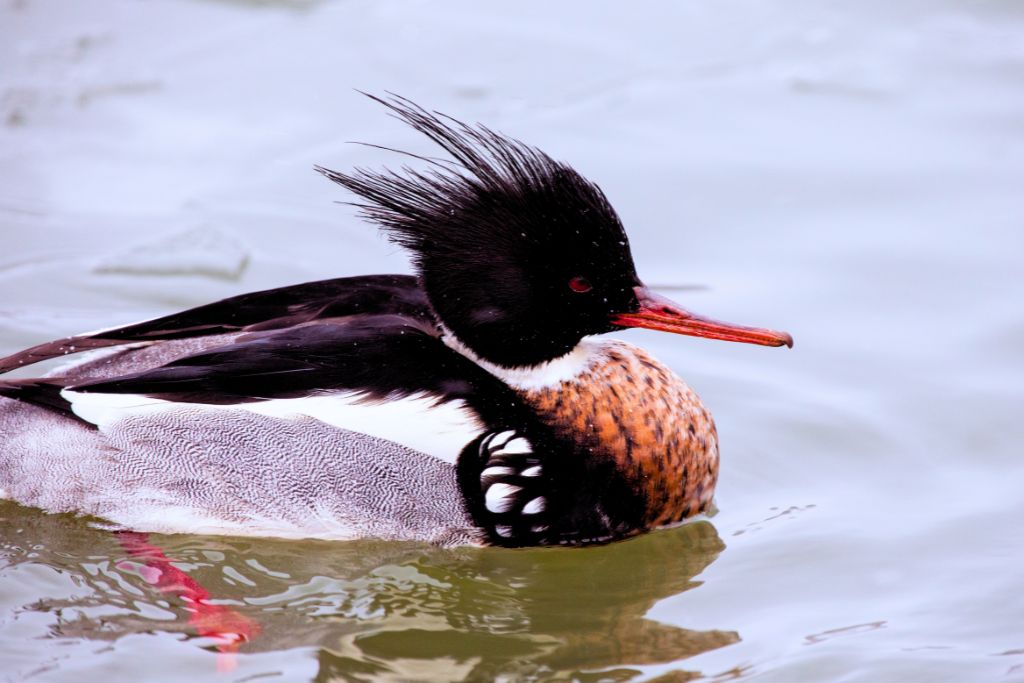
- Kingdom: Animalia
- Phylum: Chordata
- Class: Aves
- Order: Anseriformes
- Genus: Mergus
- Species: M. serrator
The Red-breasted Merganser (Mergus serrator) is a fascinating bird species found in North America. With its distinct characteristics, it stands out among other red-chested birds. Sporting a slender body and a vibrant red chest, the red-breasted merganser is known for its long, narrow bill and a shaggy crest on its head.
The male boasts a striking black-and-white pattern, while the female has a more subdued appearance with a grayish-brown color. They prefer nesting near freshwater lakes and rivers, often in secluded areas. Unlike many birds that build nests in trees, red-breasted mergansers nest on the ground, near the water’s edge.
These birds are well-suited to their environment, usually near watery bodies like lakes, rivers, and the coast. They have bodies and feet that help them dive underwater to find their favorite food – small fish, crustaceans, and aquatic animals.
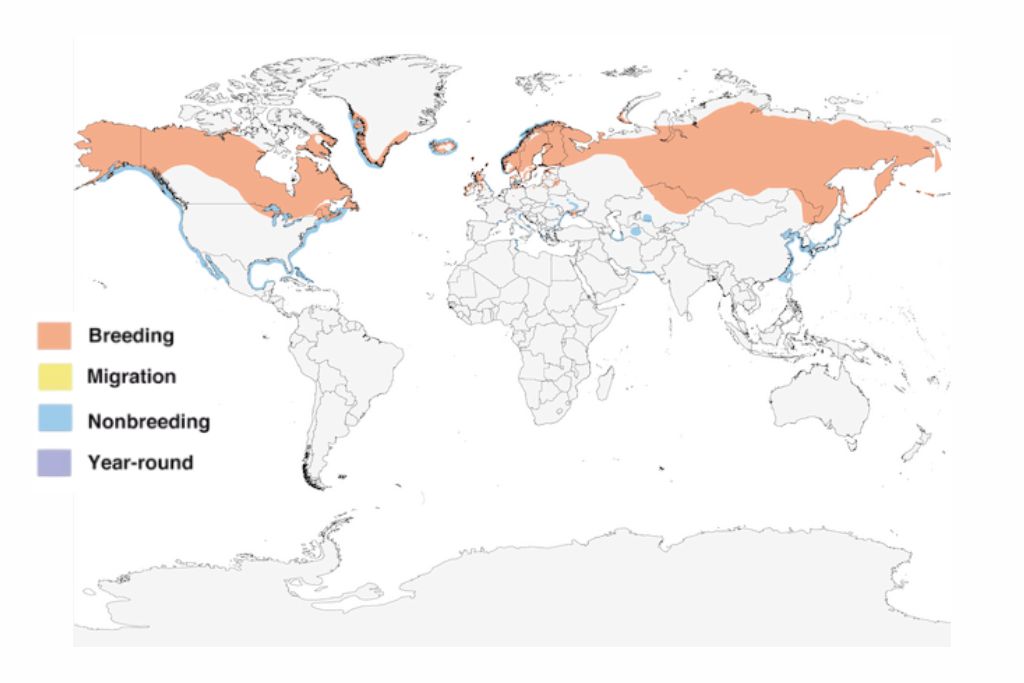
They can be found in Alaska, Canada, and other northern parts of the US during the breeding season. As winter comes, they move south and can be seen along the coasts of the United States, such as the Pacific Northwest, the Great Lakes region, and parts of the Atlantic Coast.
Red-Tailed Hawk
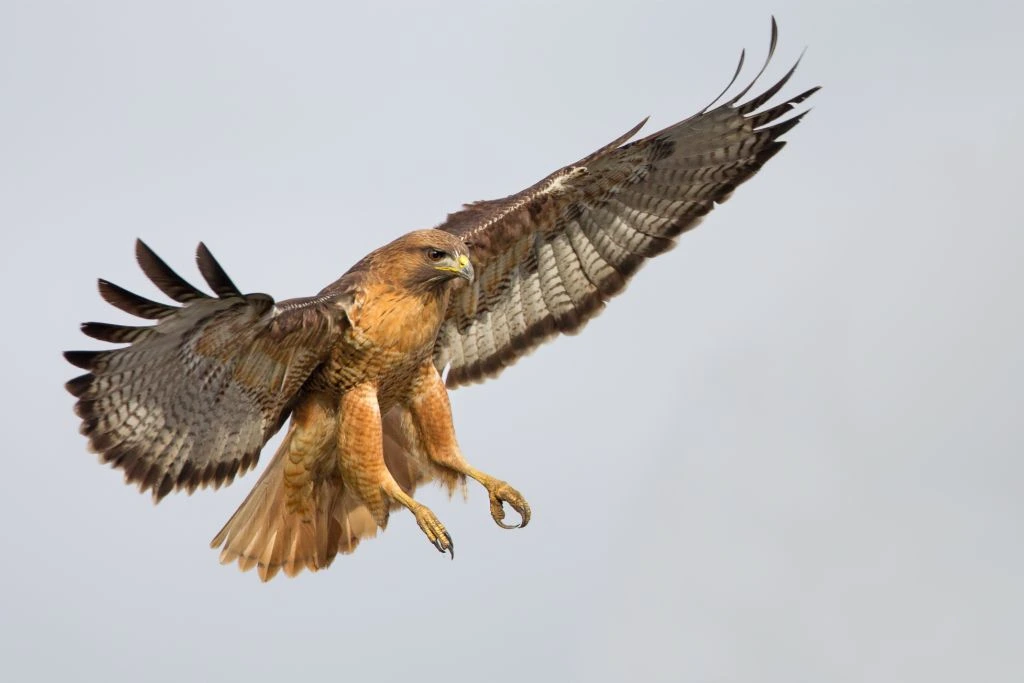
- Kingdom: Animalia
- Phylum: Chordata
- Class: Aves
- Order: Accipitriformes
- Genus: Buteo
- Species: B. jamaicensis
Red-tailed hawk, known scientifically as Buteo jamaicensis, is a large and powerful bird. This raptor can grow about 18 to 26 inches long, with a wingspan that stretches around 4 feet wide! Its upper body is dark brown, while its underparts are pale.
The name of this bird comes from the color of its tail, which is a striking reddish brown when the bird is in flight. These hawks have a hooked beak and strong, taloned feet, making them excellent predators.
When it comes to nesting, red-tailed hawks show some interesting behaviors. They build large nests high up in the trees or on cliff edges, sometimes even on tall man-made structures.
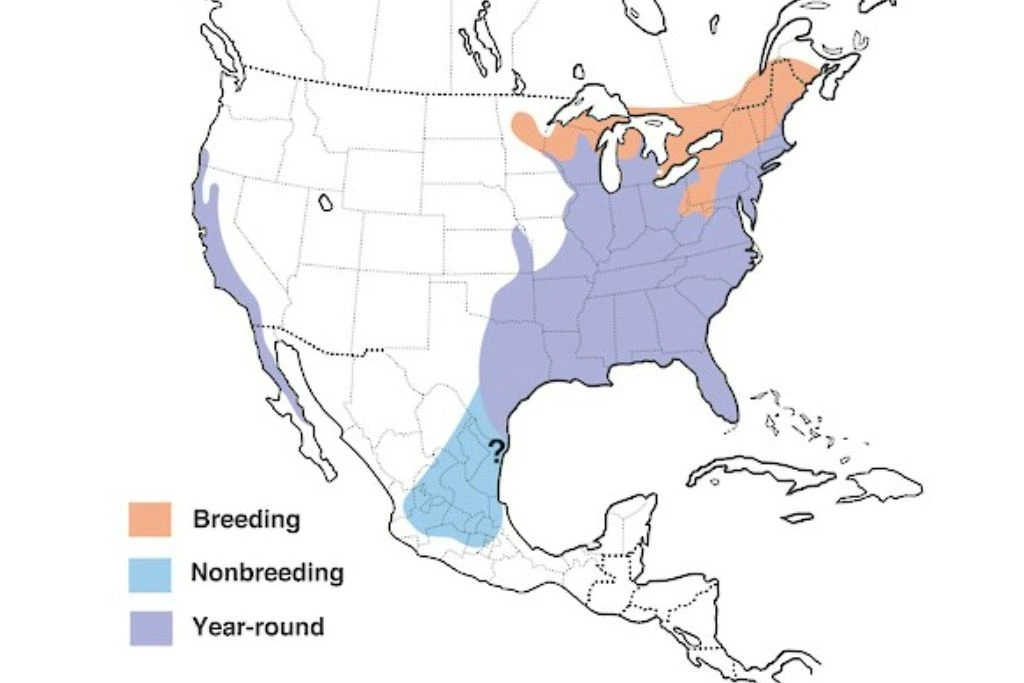
Red-tailed hawks are top predators in deserts, grasslands, woods, and fields. They often fly high, searching for prey. They dive quickly to catch a juicy mouse, rabbit, or snake with their sharp talons. Red-tailed hawks live from Alaska to Panama. North America’s commonest raptors.
Common Redpoll
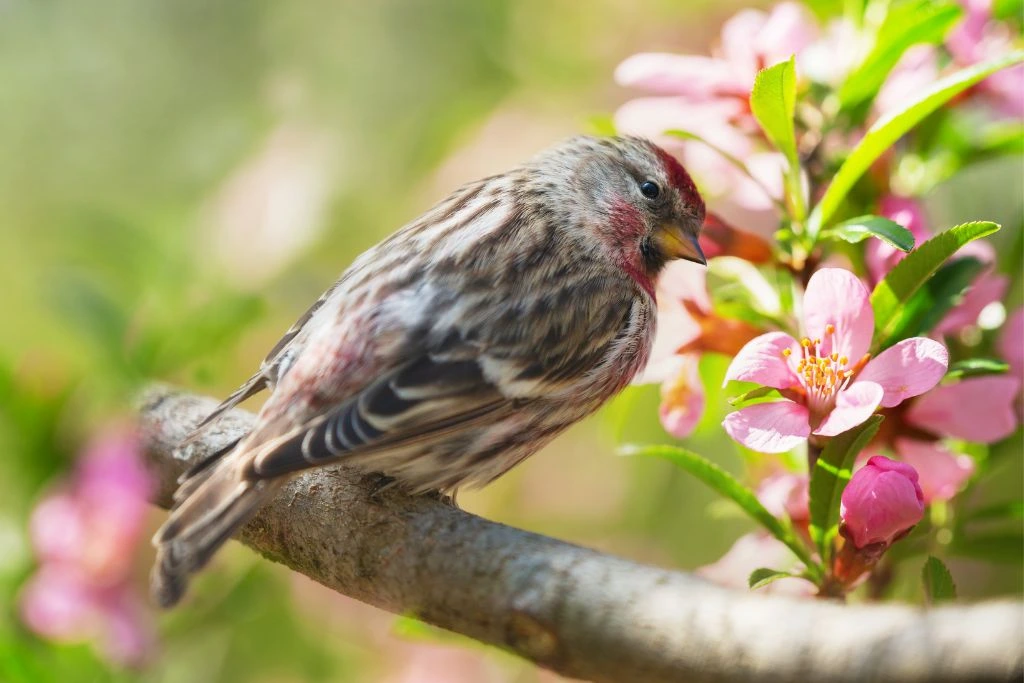
- Kingdom: Animalia
- Phylum: Chordata
- Class: Aves
- Order: Passeriformes
- Genus: Acanthis
- Species: A. flammea
Common Redpoll (Acanthis flammea) is a charming little bird, just a bit bigger than a sparrow. It’s named for its adorable, rosy-red cap on top of its head. The males, in addition, also have a beautiful blush of red on their chests.
These birds are covered in white and brown streaks, with two white wing bars adding to their enchanting appearance.
Unlike many other red-chested birds, the Common Redpolls build their nests low to the ground, often in shrubs or dense trees. The nests are crafted with twigs and grass and lined with feathers for warmth.
Common redpolls are well-adapted to cold environments and are often found in open subarctic woodland or scrub during the breeding season. In Michigan, you are most likely to see common redpolls in the winter when they come South searching for food.

Their diet primarily consists of seeds, especially birch and alder seeds, but they also snack on insects during the summer. They are often seen visiting bird feeders in backyards.
So, if you live in Michigan, keep your eyes open and your bird feeder stocked, you might just get a visit from these little feathered friends!
Red-Breasted Flycatcher
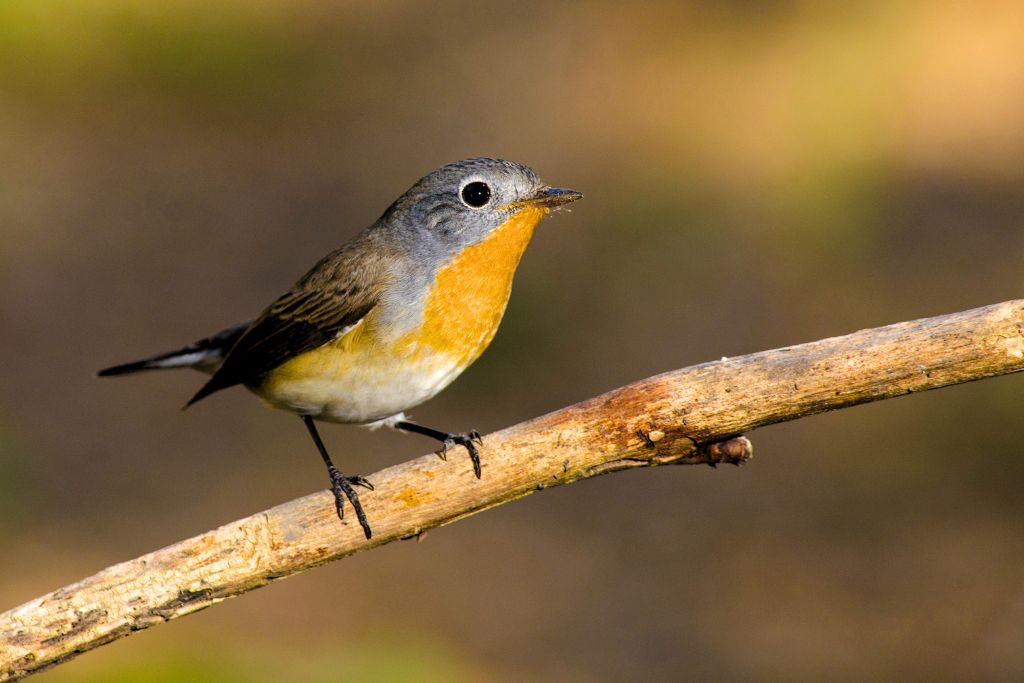
- Kingdom: Animalia
- Phylum: Chordata
- Class: Aves
- Order: Passeriformes
- Genus: Ficedula
- Species: F. parva
The Red-breasted Flycatcher (Ficedula parva) is a small bird, only about 5 inches long. The red-orange color on the chest and face of the males can identify that. The females and younger birds are a bit more plain, with a grayish-brown color. One unique thing about these birds is the two white stripes on their wings, which you can see when they fly.
Instead of building nests in trees, they often nest in tree holes, using grass, leaves, and feathers to create a soft space for their eggs. The female does most of the work here, building the nest and caring for the chicks, while the male guards the territory.
Living in forests and woodlands, red-breasted flycatchers are great at catching insects mid-air, which is how they got their name! You’ll often see them sitting on a branch, quickly flying out to grab a bug, then returning to the same spot.
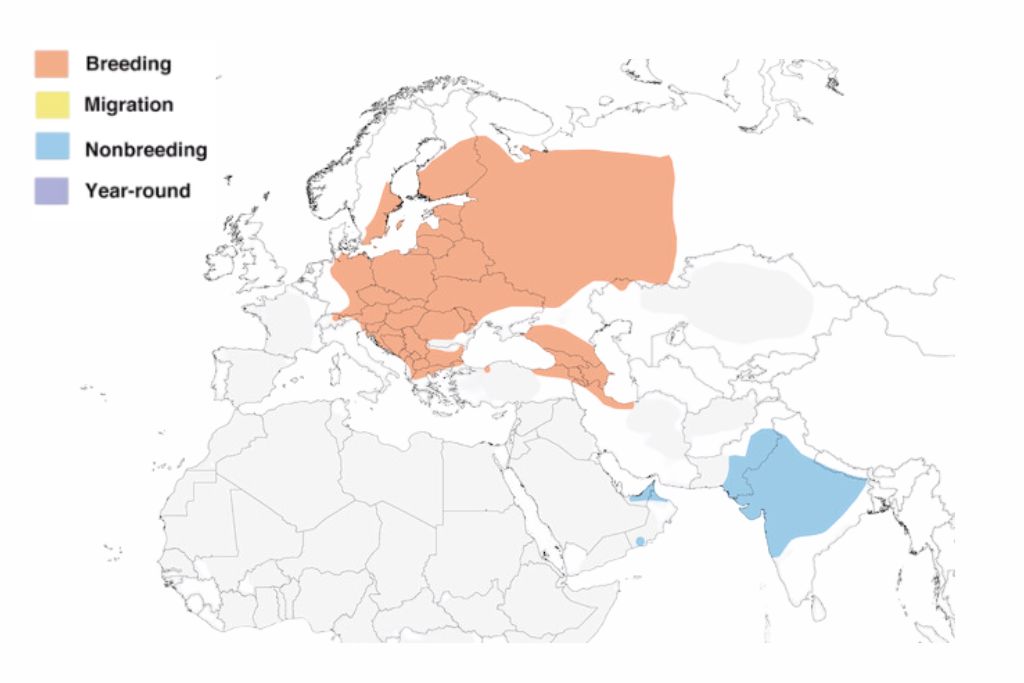
Red-breasted flycatchers are not typically seen in the US. They breed in Eastern Europe and across Central Asia and usually migrate to India for the winter. It’s rare, but every once in a while, one might end up in North America. So, if you spot one in Michigan, consider yourself lucky!
Red Crossbill
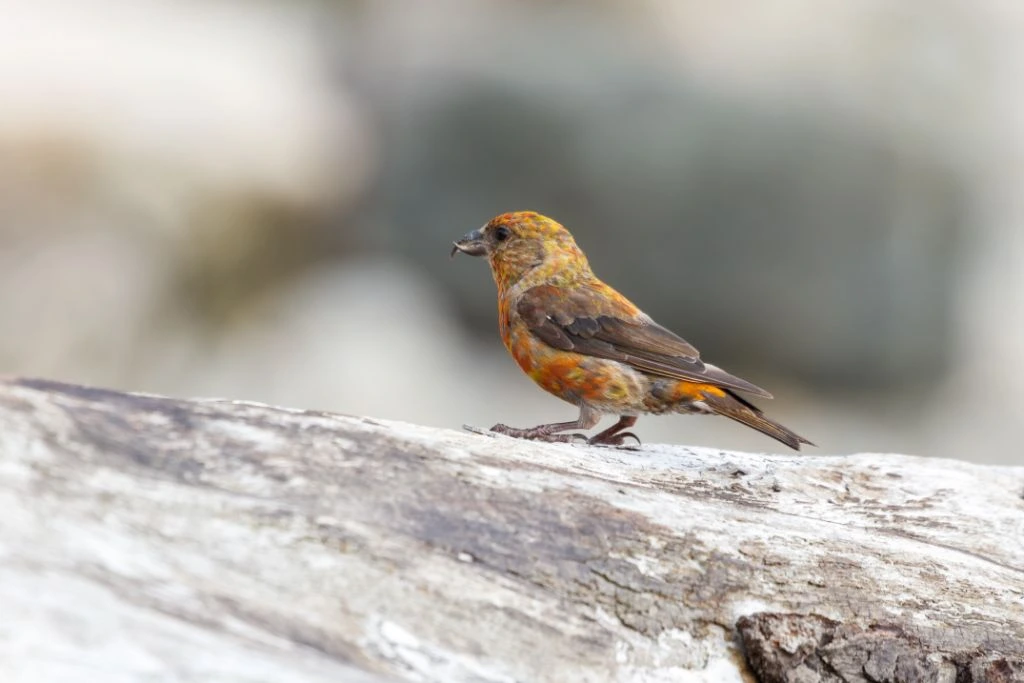
- Kingdom: Animalia
- Phylum: Chordata
- Class: Aves
- Order: Passeriformes
- Genus: Loxia
- Species: L. curvirostra
With their unique crossed bills, the red crossbills (Loxia curvirostra) stand out from the crowd. The males are red or orange, while the females are yellow-green.
They use their special bills to get seeds out of pinecones, which is something, not many other birds can do.
When it’s time to nest, red crossbills don’t follow a set schedule like other birds. Instead, they can breed any time of the year if there’s enough food. They build their nests high up in coniferous trees, with both parents helping to care for the young.
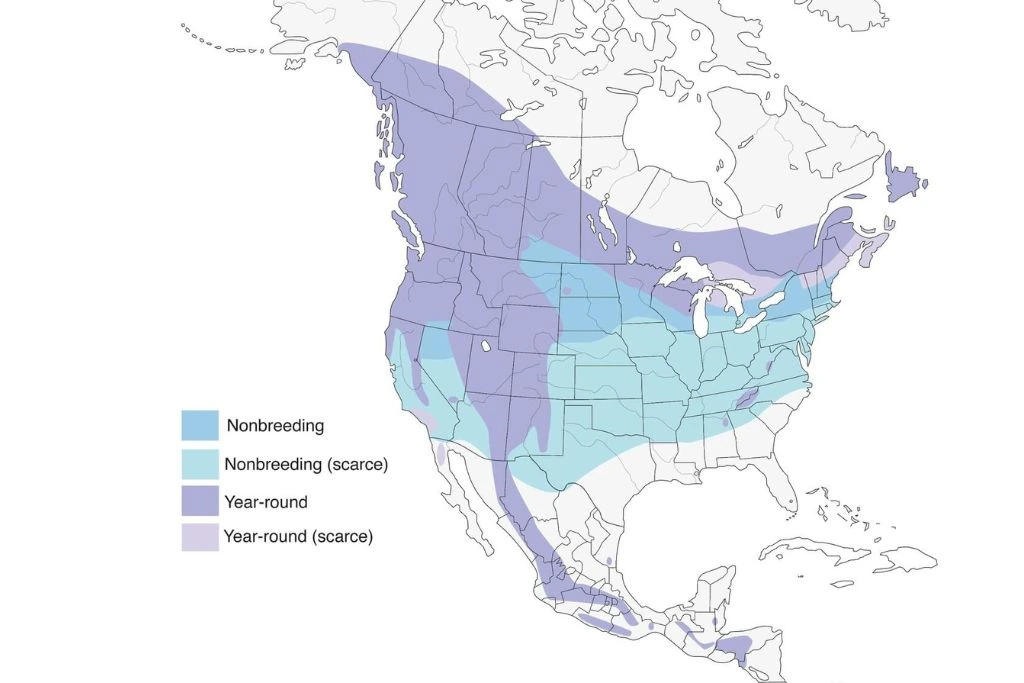
Since they spend much of their time in pine forests, red crossbills have honed their skills at clinging to pinecones. If you observe a bird perched inverted on a pinecone, chances are it’s a red crossbill. They frequent pine forests and other wooded regions in Michigan.
Red Phalarope
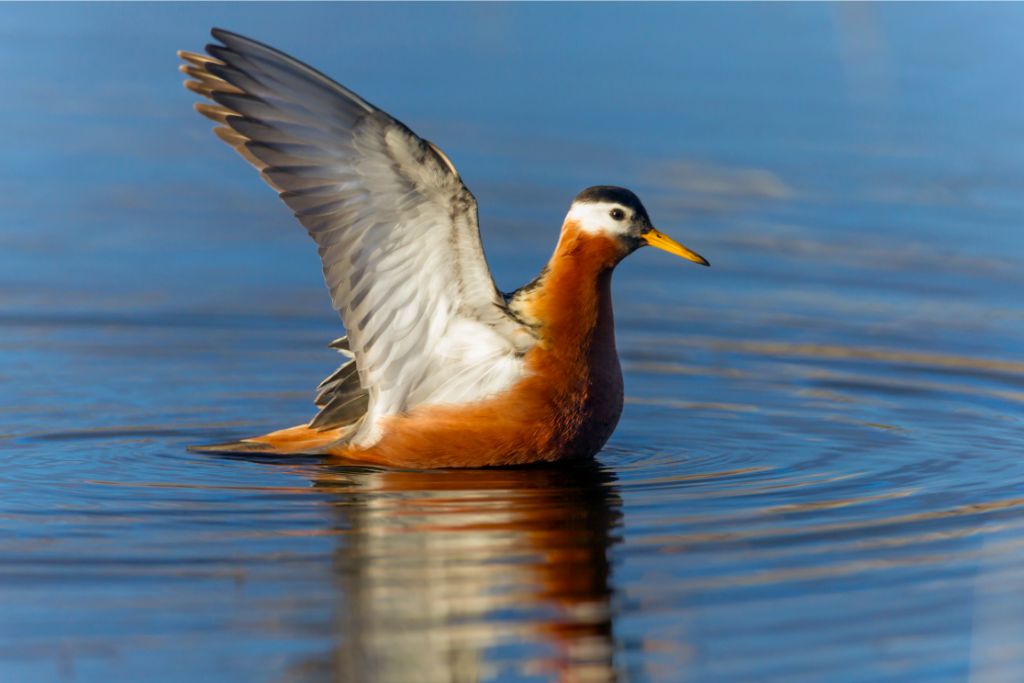
- Kingdom: Animalia
- Phylum: Chordata
- Class: Aves
- Order: Charadriiformes
- Genus: Phalaropus
- Species: P. fulicarius
Red phalaropes (Phalaropus fulicarius) are pretty to look at because their bodies are bright red and their bills are yellow. But did you know that the most beautiful ones are the females? This is the opposite of most other birds, where the males are generally more colorful.
When it’s time to nest, the females choose the spot and build the home. After laying the eggs, they might find another male to mate with while the males care for the eggs and chicks.
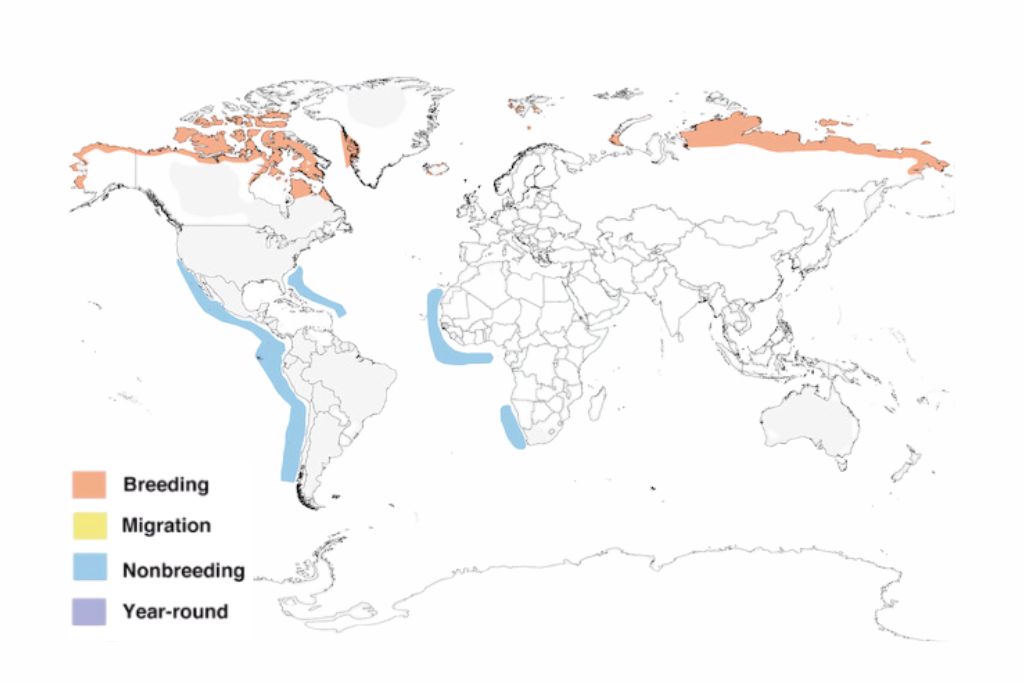
Most of the time, Red Phalaropes are seen on the water, spinning in loops to stir up food like insects, crustaceans, and small fish. They are also one of the few bird types that can drink salt water because they have glands that help remove the salt.
Even though they mostly live in the Arctic, you can sometimes see them in Michigan while traveling. Large amounts of water, like the Great Lakes, are the best places to find them.
Rose-Breasted Grosbeak
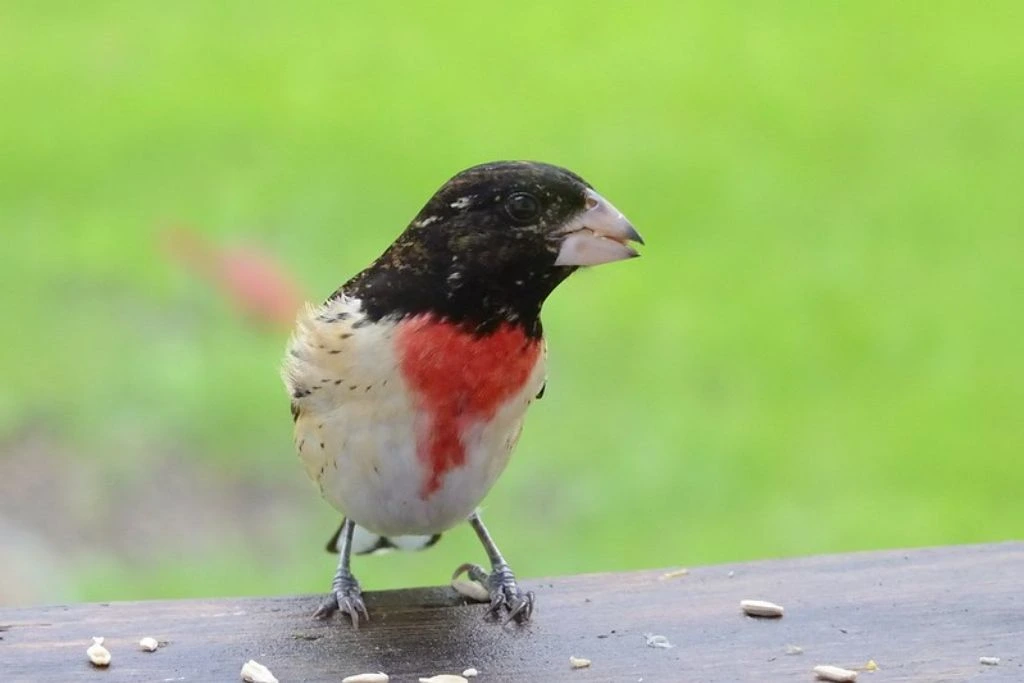
- Kingdom: Animalia
- Phylum: Chordata
- Class: Aves
- Order: Passeriformes
- Genus: Pheucticus
- Species: P. ludovicianus
Rose-breasted grosbeaks (Pheucticus ludovicianus) are beautiful birds that birdwatchers love to spot! Males have a bright red patch on their chest like they’re wearing a rose-colored bib. Females are brown and striped, similar to a big sparrow. Both have a large, chunky bill to crack open seeds.
Although most birds remain silent while resting on their nests, so as not to alert potential predators, these birds have the wonderful habit of singing while doing so. The male and female birds take turns caring for the eggs and feeding the young.
Rose-breasted grosbeaks live in woodland edges and gardens, where they can feast on insects, seeds, and berries. They’re pretty adaptable, and they’re even comfortable visiting bird feeders!
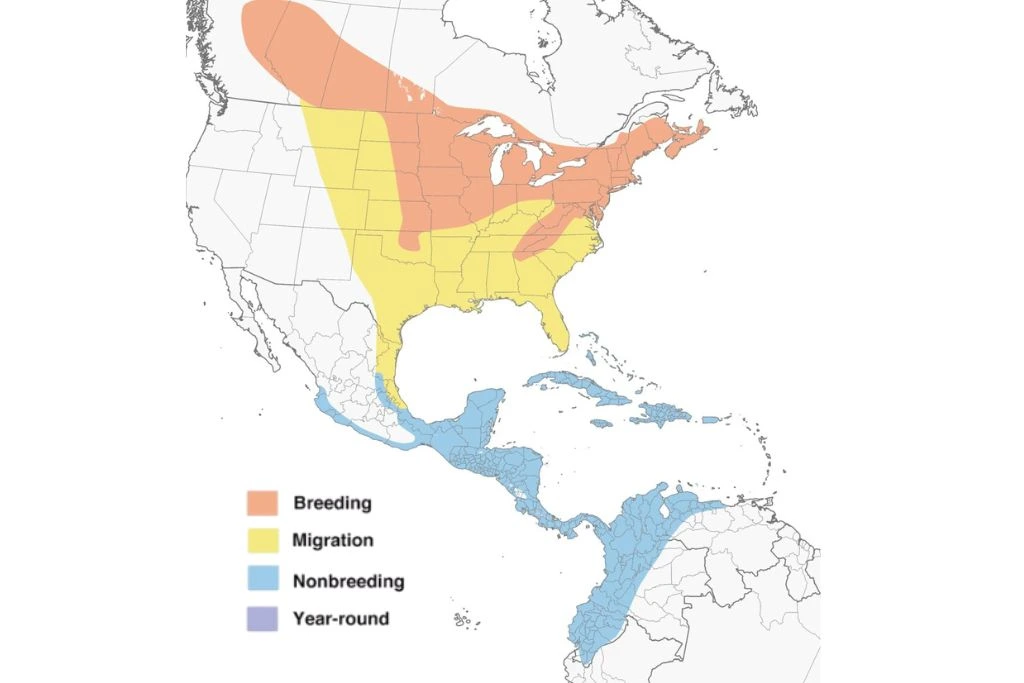
In Michigan, these birds are common in the spring and summer. They are seen across the state but are most common in the northern parts of Lower Michigan and throughout Upper Michigan.
Ruby-Throated Hummingbird
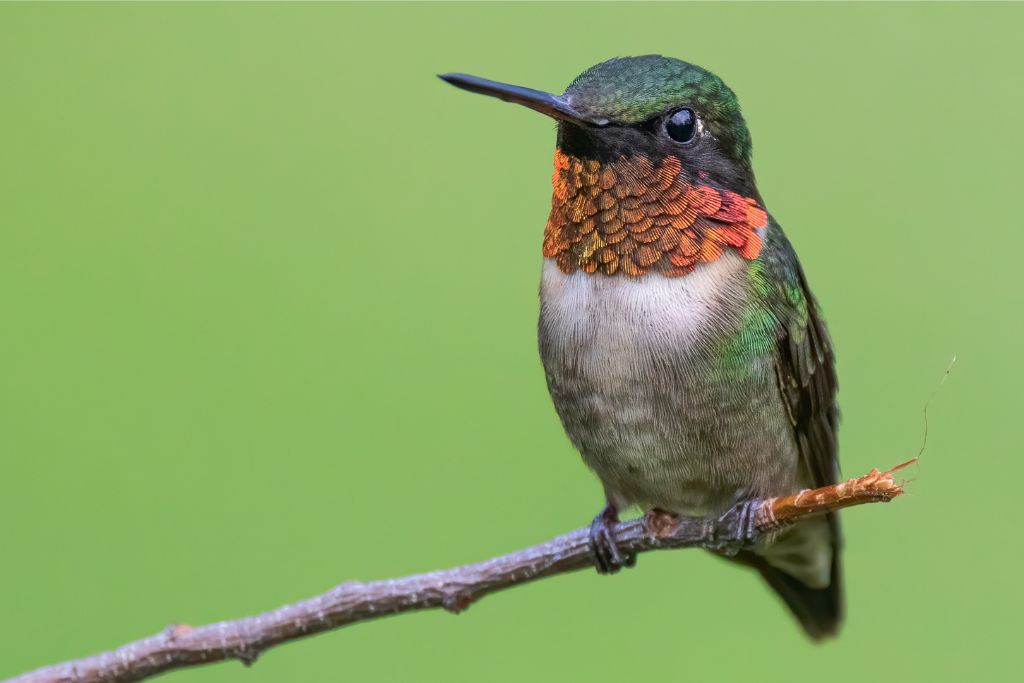
- Kingdom: Animalia
- Phylum: Chordata
- Class: Aves
- Order: Apodiformes
- Genus: Archilochus
- Species: A. colubris
Ruby-throated hummingbird (Archilochus colubris) is a birdwatcher’s delight! They’re small and quick, with males with bright red throats shining like a ruby in the sunlight. Females are a little less flashy, with green upper parts and a white belly.
Their nesting habits are remarkable! The female builds a tiny nest out of plant fibers and spider silk then lays eggs that are no bigger than a pea. She is the one who takes care of the eggs and the baby birds all by herself.
Ruby-throated hummingbirds love gardens and woodland edges where flowers are abundant. They feed on nectar from flowers and sometimes catch small insects and spiders. Their fast-beating wings allow them to hover in mid-air as they feed.
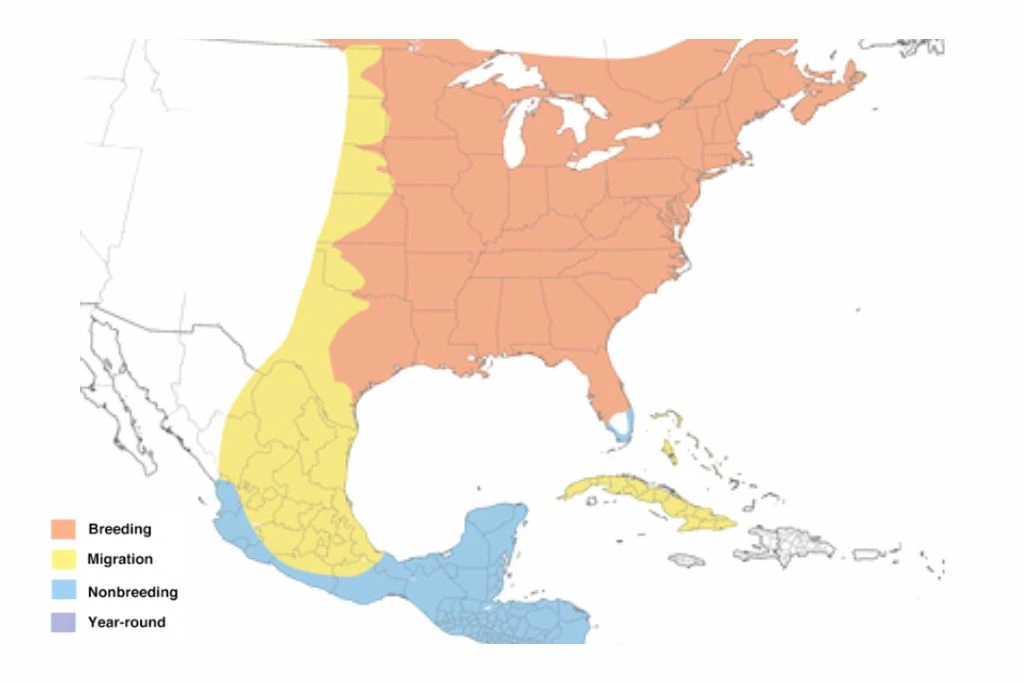
During the summer months, you can see these finches all over Michigan. If you want them to come to your yard, put up a sugar-water-filled hummingbird feeder or plant some local flowers that produce nectar.
White-Winged Crossbill

- Kingdom: Animalia
- Phylum: Chordata
- Class: Aves
- Order: Passeriformes
- Genus: Loxia
- Species: L. leucoptera
The White-winged crossbill (Loxia leucoptera) is a neat bird to spot, as it has some unique features that make it stand out. These birds have a red or pinkish color on their bodies, with the males typically being more colorful than the females. This special bill helps them to open up conifer cones, which are their favorite food.
They have babies whenever they find enough food, at any time of the year. The female builds a cup-shaped nest out of sticks and grass, usually in a conifer tree, and takes care of the eggs and chicks.
Most of the time, these birds live in woods with evergreen trees. They eat the seeds in spruce, pine, and other cones. They use their special beak to pry open the cones and get to the seeds inside. This makes them interesting to watch while they eat.

In Michigan, white-winged crossbills are primarily seen in the northern parts of the state, especially in the Upper Peninsula. If you’re lucky, you might even see them feeding or nesting!
FAQs
What is the Red Bird in Michigan Called?
The red bird commonly seen in Michigan is called the northern cardinal (Cardinalis cardinalis). It is known for its vibrant red plumage and distinctive crest.
What Little Bird has a Red Chest?
The little bird with a red chest is often the male of various bird species, such as the scarlet tanager (Piranga olivacea), summer tanager (Piranga rubra), or the red-breasted nuthatch (Sitta canadensis).
What Attracts Red-Chested Birds?
Red-chested birds are typically attracted to areas with abundant food sources, such as berries, fruits, and nectar-producing flowers. Providing bird feeders with seeds and suet can also attract red-chested birds to your backyard.


